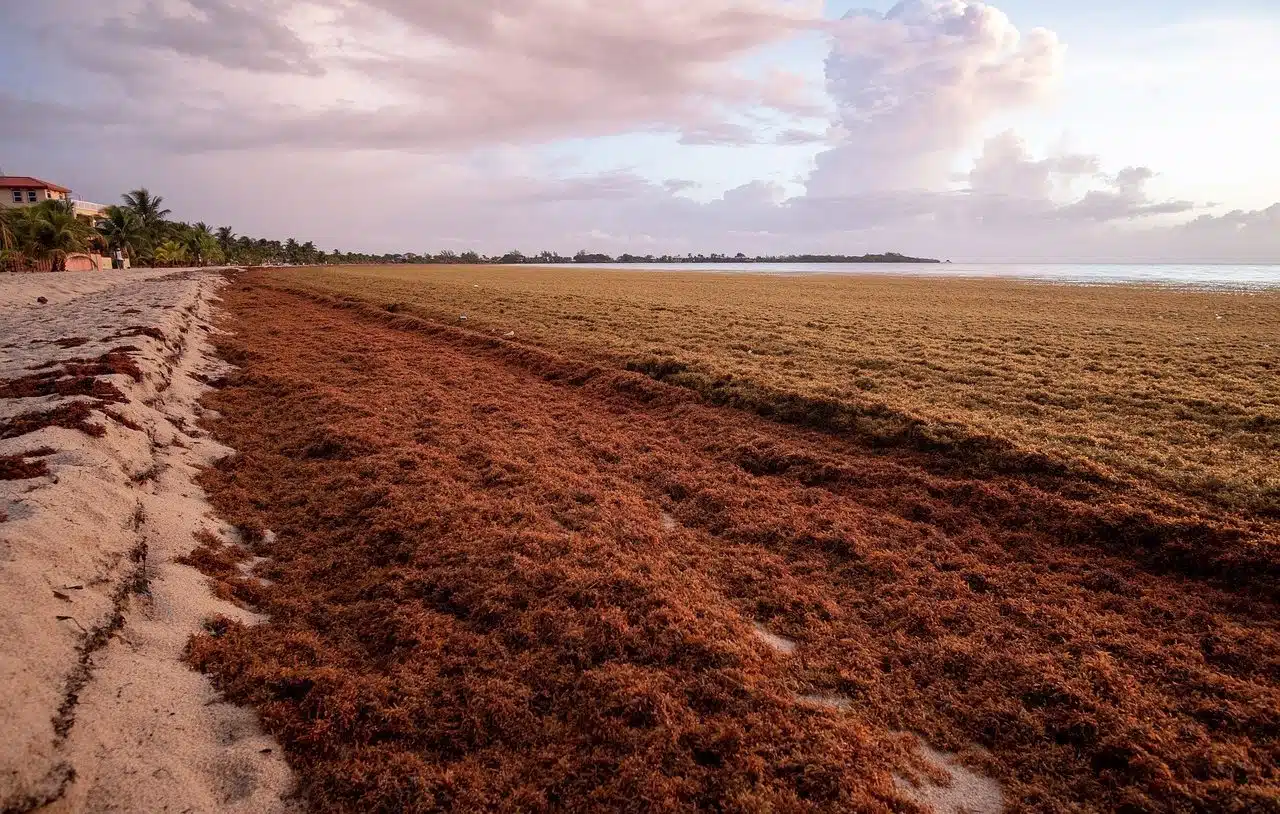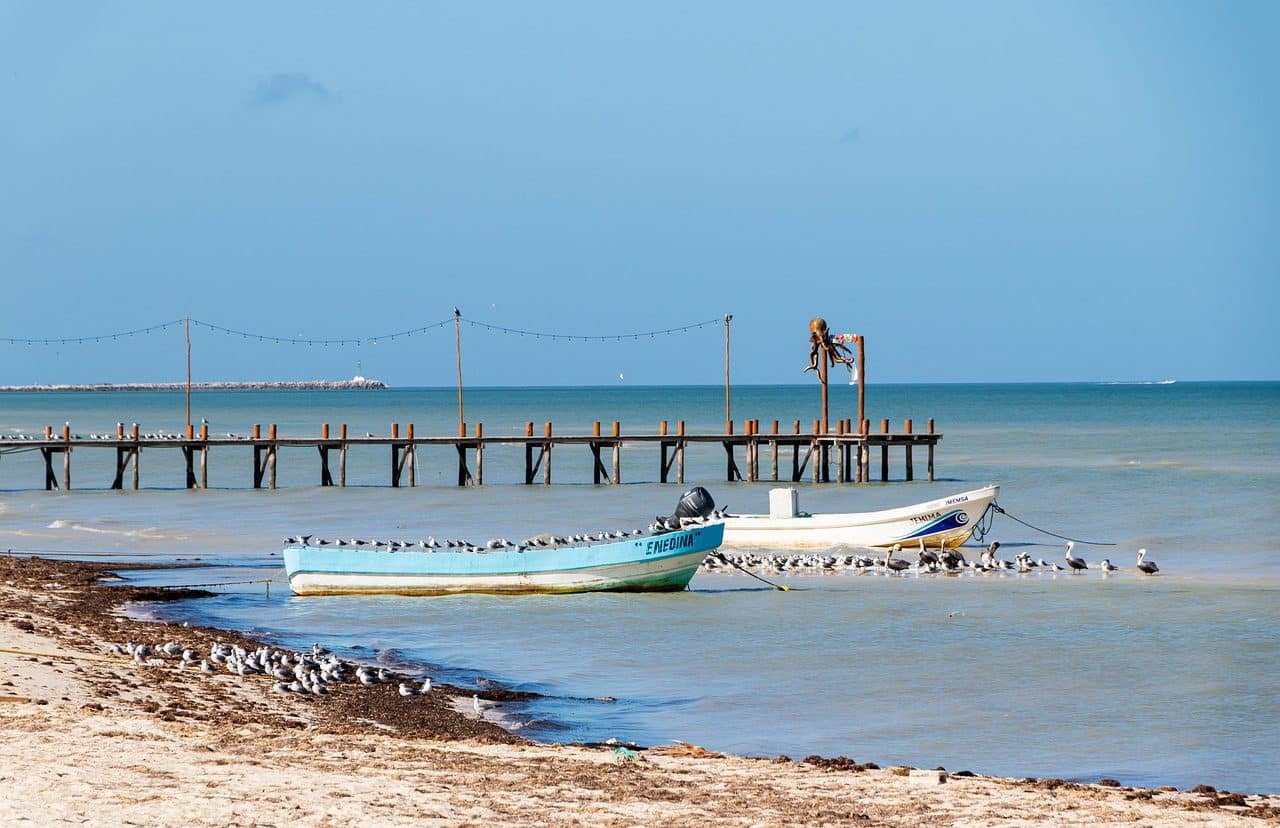
The decomposition of sargassum has ecological impact and affects the tourism industry.
Sargassum is a brown, greenish or blackish seaweed . The concept refers to a genus made up of more than 300 species, so there is no single type of sargassum.
Sargassum often floats on the surface of the sea, although there are species that adhere to the seabed. When the number of specimens becomes excessive and the remains of the sargassum reach the beach, accumulating in the sand, their presence becomes an ecological problem .
Characteristics of sargassum
Sargassum are macroscopic algae or macroalgae of the genus Sargassum , which belong to the class of brown algae. In its thallus you can distinguish between an area similar to a stem and another similar to a root.
From the area that resembles a stem, sheet-shaped organs can arise like the leaves of phanerogamous plants, which have axillary vesicles and a central nerve that protrudes. Thanks to these vesicles that contain air, sargassum is able to float.
The habitat of sargassum is located in tropical areas . It usually sticks to corals, growing next to them in a subsidiary manner, although it can also attach to rocks.
Likewise, sargassum sometimes maintains a drifting float , creating populations of enormous size and constituting an ecosystem that provides shelter to other animals.
Sargassum vulgare,Sargassum natans,Sargassum pallidum y Sargassum horneri son algunas especies de sargazo. Se trata de organismos con características en común y, a su vez, diferentes particularidades.

Sustainable tourism in coastal areas requires adequate control of sargassum.
Its presence in the Atlantic Ocean
There is an area in the Atlantic Ocean called the Sargasso Sea . The name is due to the large presence of these algae in an area of calm waters. Specifically, the Sargasso Sea develops between the parallels 20º and 35º N and the meridians 40º and 70º W , covering an area of about 3,200 kilometers long and 1,100 kilometers wide.
The Sargasso Sea has no coastline and is defined by its biological features. It is believed that the region was described in the 4th century by the poet Avieno in his work “Ora maritima” , although the first concrete testimony left in writing was made by Christopher Columbus in 1492 .
Bounded by ocean currents, the Sargasso Sea used to be considered an obstacle to sailing due to the accumulation of algae and plankton and poor winds. However, over time it was noted that the vessels were experiencing difficulties moving forward due to the impact of the Gulf Stream .
It should be noted that the Sargasso Sea plays an important role in the migration of sea turtles, whales and eels. It is also home to a species known as sargassum fish , adapted to live among algae.
It is interesting to note that the Sargasso Sea is mentioned in books by Jules Verne , Ezra Pound , Julio Cortázar and Horacio Quiroga , among other authors. The first album by Argentine musician Skay Beilinson , meanwhile, is titled “Through the Sargasso Sea.”

The installation of containment barriers as part of coastal management can help minimize the arrival of sargassum to beaches.
Sargassum as a problem for ecology
When sargassum forests approach the coasts and algae cover the sand, an ecological problem arises that has social consequences and a significant economic impact. This has been accentuated by a movement of sargassum towards the tropical Atlantic , arriving on beaches in the Caribbean (in areas of Mexico , Barbados , the Dominican Republic and other nations) and Africa and giving rise to the so-called Great Atlantic Sargassum Belt .
Under favorable conditions, the mass of sargassum doubles every 20 days. When algae begin to populate the waters near the coast, they block the sun's rays that should reach the bottom of the sea, so other algae and corals cannot carry out photosynthesis .
As they die, on the other hand, sargassum decomposes, emitting gases such as methane and hydrogen sulfide and consuming oxygen . This triggers effects that harm many species; On the other hand, when the remains of sargassum accumulate in the sand, the bad smell spreads and the landscape is modified.
Due to these issues, the white sand beaches turn brown, the water is no longer crystal clear and the stinking aroma is felt in the environment. In this way, they lose tourist attraction. In fact, tourism in the Caribbean is already suffering during the sargassum season (which runs from approximately May to October).
Not only marine fauna, marine flora and biodiversity in general suffer from excess sargassum: even human health can be damaged. Respiratory problems and skin conditions are among the possible complications.
Climate change
Experts attribute this problem to climate change ; more precisely, to global warming . With the increase in water temperature and agricultural and industrial discharges, nutrients in the sea increase, eutrophication occurs and the amount of sargassum multiplies.
Therefore, one way to prevent sargassum from becoming a complication for the environment is to combat global warming. Eliminating or reducing greenhouse gases is a necessary measure, both to address these difficulties and to mitigate or reverse other conflictive situations at an ecological level.
The use of sargassum
The development of sargassum harvesting techniques is essential to quickly clean the banks. In any case, specialists indicate that the solution has to go beyond beach cleaners and that progress must be made in the treatment of sargassum to take advantage of it.
With algae, for example, organic fertilizers and biofuels can be produced. Pharmaceutical compounds can also be manufactured and food products produced. In Jamaica , to mention one case, sargassum is used to feed goats.
